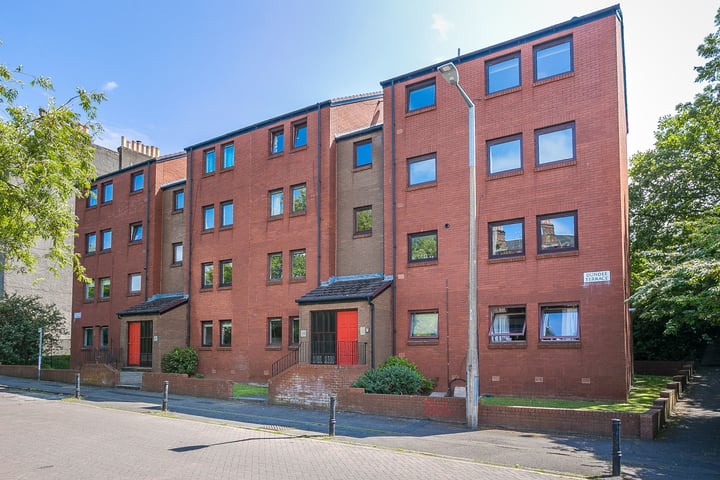The property market can be overwhelming, filled with jargon and complicated processes guaranteed to befuddle first-time buyers and seasoned veterans alike. Our detailed Property Buying Guide aims to demystify the industry to give you the tools to confidently source and purchase your next dream home (and maybe even save some money, too).
In the latest instalment of our buying guide, we’ll be tackling Home Reports – specifically, how to make them work for you as a buyer. We’ll discuss what a Home Report is, what it contains and what to look for to help you purchase your property with confidence. Let’s dive in.
What Is a Home Report?
Introduced in 2008 by the Scottish Government, Home Reports are a mandatory part of the buying and selling process and aim to equip buyers with the facts they need to make an informed choice on buying a property.
A Home Report is a property assessment conducted by a qualified surveyor and paid for by the seller, for the benefit of the buyer. In it, you’ll find useful information about the home you’re interested in, with details on everything from the property’s condition to its market value, energy efficiency, accessibility rating and more.
If you’re taking out a mortgage, the Home Report will also help your lender assess how much to give you – though bear in mind that some lenders may still insist on obtaining their own independent valuation.
The Home Report is split into three parts: the Single Survey, the Property Questionnaire and the Energy Performance Report.
The Single Survey
The Single Survey part of the Home Report is carried out by an independent chartered surveyor, who uses a visual inspection to evaluate the home’s condition and accessibility. In this section, you’ll be able to see any repairs the property might need, as well as a professional estimate of the home’s worth – also known as the valuation.
The Property Questionnaire
The Property Questionnaire is designed to provide you with essential information about your potential property. Covering 16 different categories and completed by the seller, you’ll find everything from council tax band to details of renovations carried out, as well as a list of any adverse conditions which have affected the home within the last 5 years (e.g. asbestos, fire, flooding, rot and storm damage).
The Energy Performance Report
The Energy Performance Report measures the property’s energy efficiency and will estimate how much it’ll cost to heat, light and use hot water per year. Inside you’ll find details on the home’s environmental impact (measured via carbon dioxide emissions) alongside helpful advice on improvements you can make to boost its energy efficiency.
How to Access a Property’s Home Report
Any second-hand property that has come to market after the 1st of December, 2008, is required to have a Home Report (with a few exceptions).
If you’re keen to purchase the property, you are entitled to see the Home Report and can request it from the seller or their solicitor/estate agent. The seller, or their team, must hand it over within 9 days of your request – if they don’t, you can report it to your local council’s trading standards.
There are a few (very limited) exceptions to your right to access the Home Report:
- If it is unlikely you have the means to buy the property
- If you are not genuinely interested in purchasing the property
- If the seller is not prepared to sell to you
How to Use the Home Report Effectively
The Home Report contains a considerable amount of information about your potential new home and can be overwhelming if you’re not sure what to look for. Here, we’ll list the top points to pay attention to, to ensure you’re equipped with all the facts you need to make your decision.
The Property’s Valuation
The property’s valuation, found in the Single Survey, is one of the most useful aspects of the Home Report and will provide a professional estimate of how much the home is worth. Considering that many properties hit the market with ‘offers above/over’ – it’s invaluable to know exactly how much you’re willing to pay for a property, especially if it means bidding well over the asking price.
The Property’s Condition
As well as the valuation, you’ll also find an exhaustive examination of the home’s condition in the Single Survey, with each assessment falling into a scale from one = no repairs necessary to three = urgent repairs/replacement needed now. From this, you can deduce the home’s overall health, as well as how much it’s likely to cost you to fix up if repairs are needed. Consider whether you have the budget to meet the demands.
The Property’s Energy Efficiency
The Energy Performance Report details the home’s energy efficiency and provides helpful guidance on steps you may take to improve it. Like the point above, it’s worthwhile paying attention to this, as it’ll show you how much you’re likely to pay annually to heat, light and provide hot water for your new home. This section can signal any unseen costs that should be factored into the purchase.
The Property’s Accessibility Audit
For buyers with additional needs, the accessibility audit will make for important reading, providing key details on issues like the number of steps to the entrance of the home, whether there’s a bathroom on the same floor as the bedroom and how far parking is from the house.
The Property’s Factoring Costs & Council Tax Band
To continue the discussion of unseen costs – it’s important to pay attention to the seller’s Property Questionnaire, which lists vital information on the home’s council tax band as well as any communal payments like estate factoring fees, which typically cover building maintenance, landscaping and cleaning services.
The Property’s Asbestos, Dry Rot, Flooding & Damp Status
The seller will set out any specialist treatment that the property has undergone in the Property Questionnaire, as well as provide guarantees for any services carried out (if applicable). If the home has been treated for asbestos, dry rot or damp, the seller is required to detail when they were carried out and by who, so that potential buyers can deduce whether this is a recurring problem or an issue which has been remedied.
Similar to the other points raised here, information like this will help you determine whether this home is within your budget – far beyond physically buying the property.







Leave a Reply